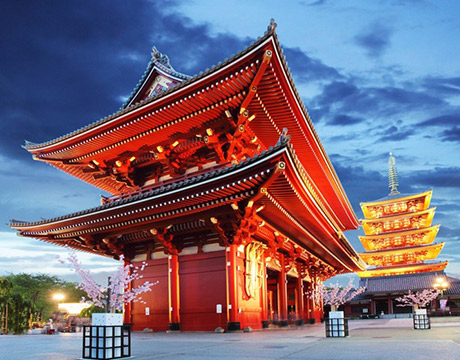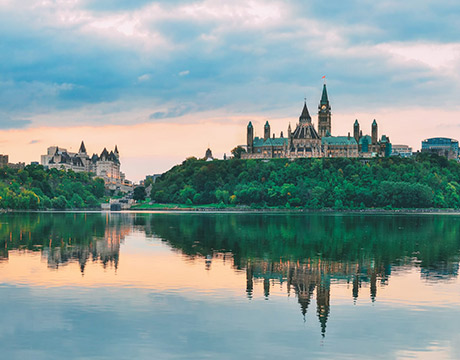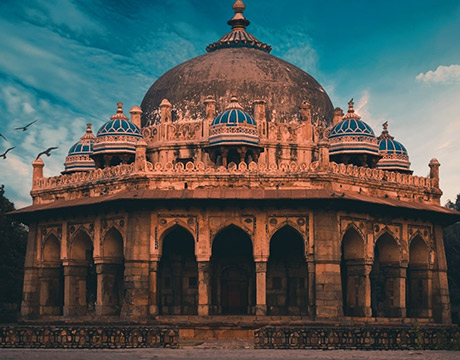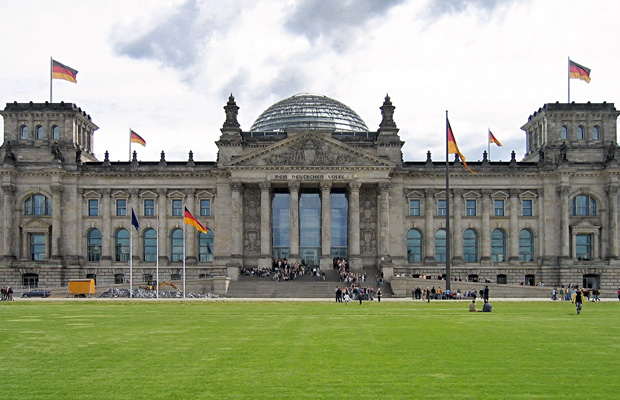Charlottenburg Palace
Charlottenburg Palace
Germany
Berlin
Berlin Travel Guide
Book Tour & Activities
Your tour in Berlin.
Book your stay
Your hotel in Berlin.
Overview
Schloss Charlottenburg is a Baroque palace in Berlin, located in Charlottenburg, a district of the Charlottenburg-Wilmersdorf borough. The palace was built at the end of the 17th century and was greatly expanded during the 18th century.
Schloss Charlottenburg is a Baroque palace in Berlin, located in Charlottenburg, a district of the Charlottenburg-Wilmersdorf borough. The palace was built at the end of the 17th century and was greatly expanded during the 18th century. It includes much lavish internal decoration in baroque and rococo styles. A large formal garden surrounded by woodland was added behind the palace, including a belvedere, a mausoleum, a theatre and a pavilion. During the Second World War, the palace was badly damaged but has since been reconstructed. The palace with its gardens are a major tourist attraction.
History
Palace
Statue Friedrich Wilhelm I (der Große Kurfürst) elector of Brandenburg in the cour d'honneur of the palace
The original palace was commissioned by Sophie Charlotte, the wife of Friedrich I, Elector of Brandenburg in what was then the village of Lietzow. Named Lietzenburg, the palace was designed by Johann Arnold Nering in baroque style. It consisted of one wing and was built in 2 1⁄2 storeys with a central cupola. The façade was decorated with Corinthian pilasters. On the top was a cornice on which were statues. At the rear in the centre of the palace were two oval halls, the upper one being a ceremonial hall and the lower giving access to the gardens. Nering died during the construction of the palace and the work was completed by Martin Grünberg and Andreas Schlüter. The inauguration of the palace was celebrated on 11 July 1699, Frederick's 42nd birthday.
Friedrich crowned himself as King Friedrich I in Prussia in 1701 (Friedrich II, known as Frederick the Great, would later achieve the title King of Prussia). Two years previously, he had appointed Johann Friedrich von Eosander (also known as Eosander von Göthe) as the royal architect and sent him to study architectural developments in Italy and France, particularly the Palace of Versailles. On his return in 1702, Eosander began to extend the palace, starting with two side wings to enclose a large courtyard, and the main palace was extended on both sides. Sophie Charlotte died in 1705 and Friedrich named the palace and its estate Charlottenburg in her memory. In the following years, the Orangery was built on the west of the palace and the central area was extended with a large domed tower and a larger vestibule. On top of the dome is a wind vane in the form of a gilded statue representing Fortune designed by Andreas Heidt. The Orangery was originally used to overwinter rare plants. During the summer months, when over 500 orange, citrus and sour orange trees decorated the baroque garden, the Orangery regularly was the gorgeous scene of courtly festivities.
Various artists were invited to decorate the interior of the palace. As the court painter of Friedrich I, the Flemish artist Jan Anthonie Coxie was commissioned to paint the walls and ceilings in various rooms of the palace. Coxie painted between 1701 and 1713 frescos and an altarpiece in the Palace Chapel and frescos in the Gobelin Gallery and Porcelain Room.[3] The frescos in the Porcelain Room were blatant propaganda for the glorious rule of Friedrich I. They represent Aurora, the Goddess of Dawn, in her seven-horsed chariot chasing away Night and clearing the way for the Sun-God Apollo, who approaches in his chariot in a blaze of light. Hovering overhead, Mercury heralds the arrival of the life-giving god and Saturn ushers in the Golden Age with his scythe. Coxie also included images of the Four Continents as well as the Four Seasons, which are familiar allusions to political power and thus affirm the greatness of Friedrich I.
Inside the palace, was a room described as "the eighth wonder of the world", the Amber Room (Bernsteinzimmer), a room with its walls surfaced in decorative amber. It was designed by Andreas Schlüter, and its construction by the Danish amber craftsman Gottfried Wolfram started in 1701. Friedrich Wilhelm I gave the Amber Room to Tsar Peter the Great as a present in 1716.
When Friedrich I died in 1713, he was succeeded by his son, Friedrich Wilhelm I whose building plans were less ambitious, although he did ensure that the building was properly maintained. Building was resumed after his son Friedrich II (Frederick the Great) came to the throne in 1740. During that year, stables for his personal guard regiment were completed to the south of the Orangery wing and work was started on the east wing. The building of the new wing was supervised by Georg Wenzeslaus von Knobelsdorff, the superintendent of all the Royal Palaces, who largely followed Eosander's design. The decoration of the exterior was relatively simple but the interior furnishings were rich with painting and sculpture, textiles, and mirrors. The ground floor was intended for Frederick's wife Elisabeth Christine, who, preferring Schönhausen Palace however, was only an occasional visitor. The especially splendid decoration of the upper floor, which included the White Hall, the Banqueting Hall, the Throne Room and the Golden Gallery, was designed mainly by Johann August Nahl. In 1747, a second apartment for the king was prepared in the distant eastern part of the wing. During this time, Sanssouci was being built at Potsdam, and once this was completed Frederick was only an occasional visitor to Charlottenburg.
In 1786, Frederick was succeeded by his nephew Friedrich Wilhelm II, who transformed five rooms on the ground floor of the east wing into his summer quarters and part of the upper floor into Winter Chambers, although he did not live long enough to use them. His son, Friedrich Wilhelm III, came to the throne in 1797 and reigned with his wife, Queen Luise, for 43 years. They spent much of this time living in the east wing of Charlottenburg. In 1804, following Prussia's defeat at Jena-Auerstedt, Napoleon marched into Berlin and settled in the palace, which became his headquarters. Their eldest son, Friedrich Wilhelm IV, who reigned from 1840 to 1861, lived in the upper storey of the central palace building. After Friedrich Wilhelm IV died, the only other royal resident of the palace was Friedrich III, who reigned for 99 days in 1888.
The palace was badly damaged in 1943 during the Second World War.[9] In 1951, the war-damaged Stadtschloss in East Berlin was demolished and, as the damage to Charlottenburg was at least as serious, it was feared that it would also be demolished. However, following the efforts of Margarete Kühn, the director of the State Palaces and Gardens, it was rebuilt to its former condition,[10] with gigantic modern ceiling paintings by Hann Trier. From 2004 till early 2006, Charlottenburg Palace was the seat of the President of Germany, whilst Schloss Bellevue was being renovated.
Grounds
The garden was designed in 1697 in Baroque style by Simeon Godeau, who had been influenced by André Le Nôtre, designer of the gardens at Versailles. Godeau's design consisted of geometric patterns, with avenues and moats, which separated the garden from its natural surroundings. Beyond the formal gardens was the Carp Pond. Towards the end of the 18th century, a less formal, more natural-looking garden design became fashionable. In 1787 the Royal Gardener Georg Steiner redesigned the garden in the English landscape style for Friedrich Wilhelm II, the work being directed by Peter Joseph Lenné. After the Second World War, the centre of the garden was restored to its previous baroque style.[11]
In 1788, Friedrich Wilhelm II arranged for the building of the Belvedere, designed by Carl Gotthard Langhans, in the grounds beyond the Carp Pond. The building was used as a teahouse and as a viewing-tower. Langhans also designed the Palace Theatre, which was built between 1788 and 1791 to the west of the Orangery wing.[12] The Mausoleum was built as a tomb for Queen Luise between 1810 and 1812 in neoclassical style to a design by Heinrich Gentz. After the death of Friedrich Wilhelm III, it was extended; this design being by Karl Friedrich Schinkel. It was extended again in 1890–91 by Albert Geyer to accommodate the graves of Wilhelm I and his wife Augusta.[13] In 1825, Friedrich Wilhelm III added the Neuer Pavilion, an Italianate villa designed by Schinkel, to the north of the palace. This was damaged in the war in 1943 and was reconstructed between 1957 and 1970.
Video Travel Inspiration
See Charlottenburg Palace on Map
Most Popular Cities

Siem Reap
Cambodia
Ho Chi Minh City
Vietnam
Beijing
China
Paris
France
London
United Kingdom
New York
USA
Tokyo
Japan
Bangkok
Thailand
Seoul
South Korea
Vientiane
Laos
Yangon
Myanmar
Washington DC
USA
Los Angeles
USA
Ottawa
Canada
New Delhi
India
Singapore
Singapore
Kuala Lumpur
Malaysia
 English
English French
French Khmer
Khmer Thai
Thai Vietnamese
Vietnamese Chinese
Chinese Korean
Korean German
German Japanese
Japanese Italian
Italian Russian
Russian Spanish
Spanish Dutch
Dutch Indonesian
Indonesian Malay
Malay















